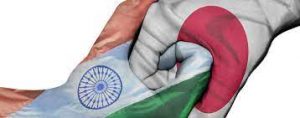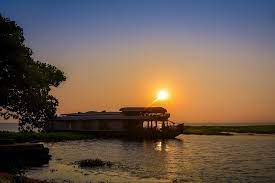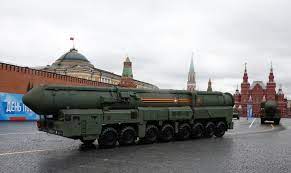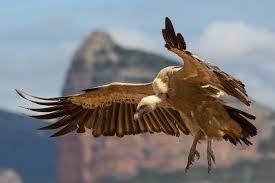Today’s Current Affairs: 31st March 2023 for UPSC IAS exams, State PSC exams, SSC CGL, State SSC, RRB, Railways, Banking Exam & IBPS, etc
Table of Contents
Upward Lightning:

Brazilian researchers recently succeeded in taking pictures of the Upward Lightning Phenomenon.
- Upward lightning is a phenomenon whereby a self-initiated lightning streak develops from a tall object that travels upward toward an overlaying electrified storm cloud.
- For this to happen, storm electrification and the resulting presence of a cloud charge region are enabling factors.
- The vertical elevation of a tall object accentuates the electric field locally on the ground, resulting in conditions favourable for the initiation of an upward streak (called a leader) from a tall object, which can also develop in response to an electric field change created by a nearby preceding lightning flash.
- Upward lightning typically has a lower intensity and duration compared to downward lightning.
- It also has a higher frequency of occurrence during thunderstorms
- Upward lightning can cause damage to structures such as buildings and towers by creating an electrical surge that can overload electrical systems and cause fires or explosions.
- Upward lightning can also pose a risk to aviation, particularly for planes that fly close to tall structures during thunderstorms.
- This can cause electromagnetic interference, affecting communication and navigation systems.
Employees Provident Fund Organization (EPFO) : Report

Reports suggest that most of EPFO’s equity investments are routed into Nifty 50 stocks, including Adani Enterprises and Adani Ports & SEZ.
- Employees’ Provident Fund Organization (EPFO) is under the administrative control of the Ministry of Labour and Employment, Government of India.
- It is one of the World’s largest Social Security Organisations in terms of clientele and the volume of financial transactions undertaken.
- It into existence with the promulgation of the Employees’ Provident Funds Ordinance on the 15th of November 1951.
- It was replaced by the Employees’ Provident Funds Act, of 1952.
- The Employees’ Provident Funds Bill was introduced in the Parliament in the year 1952 as a Bill to provide for the institution of provident funds for employees in factories and other establishments.
- The Act is now referred to as the Employees’ Provident Funds & Miscellaneous Provisions Act, 1952 which extends to the whole of India.
- The Act and Schemes framed there under are administered by a tri-partite Board known as the Central Board of Trustees, Employees’ Provident Fund.
- The Central Board of Trustees consists of representatives of Government (Both Central and State), Employers, and Employees.
Regional Search And Rescue Exercise : Indian Coast Guard

The Indian Coast Guard recently conducted a Regional Search and Rescue exercise in Kakinada, Andhra Pradesh, to simulate a real-time maritime distress scenario and highlight the functioning of the Search and Rescue organization (SAR) for a mass rescue operation.
- The exercise involved all stakeholders and effectively used available resources towards Maritime Search and Rescue contingency efficiently.
- Sea area off Kakinada was chosen as the venue for the exercise considering the large-scale exploration and production activities in the Krishna Godavari basin which makes the area potential for emergencies necessitating large scale SAR response.
Japan’s Official Development Assistance To India:

Japan has approved Official Development Assistance (ODA) to India, for a few Key projects.
Projects under ODA:
- Rs. 5,509 crores have been approved for Patna Metro Rail Construction Project (I).
- It aims to cope with the increase of traffic demand in Patna by constructing the new metro corridor, thereby contributing to improvement of the urban environment and development of the economy as well as mitigation of Climate Change.
- Rs. 520 crores approx. have been approved for the Project for Forest and Biodiversity Conservation for Climate Change Response in West Bengal.
- It aims to mitigate and adapt to climate change, conserve and restore ecosystems by ecosystem-based climate change measures, biodiversity conservation and restoration, thereby contributing to sustainable socio-economic development in the State.
- Rs. 1,055.53 crores have been approved for Rajasthan Water Sector Livelihood Improvement Project (II).
- It aims to improve livelihoods of farmers as well as promote gender mainstreaming in agriculture and irrigation sector in the State, by improving water use efficiency and agriculture productivity, through improvement of existing irrigation facilities and agriculture support services.
Heat Index : IMD

The India Meteorological Department (IMD) is planning to introduce a ‘heat index’ warning system in Delhi and other parts of the country.
- The IMD has conducted a study on the impact of meteorological factors on heatwaves and the “heat wave hazard zonation” of the country.
- According to “Hot Weather Analysis over India,” IMD revealed that the mechanism by which heat impacts humans is complex; it is a result of the interactions between temperature, radiation, wind, and humidity.
- There is strong experimental evidence that physiologic stress from high temperatures is greater if humidity is higher.
- Heat Index will calculate the temperature along with the humidity levels to provide a more accurate measure of what the temperature actually feels like.
- In the US, the heat index is color-coded to provide warnings based on the impact of the heat index.
- The IMD is planning to introduce a similar color-coded warning system in India.
- A heatwave is a period of abnormally high temperatures, a common phenomenon in India during the months of May-June and in some rare cases even extends till July.
- The Heatwave is considered when the maximum temperature of a station reaches at least 40°C for Plains and at least 30°C for Hilly regions.
Vemband And Ashtamudi Lakes : Penalty Imposed By NGT

The National Green Tribunal (NGT) imposed a penalty of Rs 10 crore on the Kerala government for failing to protect the Vembanad and Ashtamudi lakes.
- Vemband is the largest lake in Kerala and the longest Lake in India.
- It is also known as Vembanad Kayal, Vembanad Kol, Punnamada Lake (in Kuttanad) and Kochi Lake (in Kochi).
- The lake has its source in four rivers, Meenachil, Achankovil, Pampa and Manimala.
- It is separated from the Arabian Sea by a narrow barrier island and is a popular backwater stretch in Kerala.
- Vallam Kali (i.e Nehru Trophy Boat Race) is a Snake Boat Race held every year in the month of August in Vembanad Lake.
- In 2002, it was included in the list of wetlands of international importance, as defined by the Ramsar Convention.
- The Government of India has identified the Vembanad wetland under the National Wetlands Conservation Programme.
- Ashtamudi Lake (Ashtamudi Kayal), in the Kollam District of the Indian state of Kerala, is the most visited backwater and lake in the state.
- It possesses a unique wetland ecosystem and a large palm-shaped water body, second only in size to the Vembanad estuary ecosystem of the state.
Moskit Cruise Missiles : Test-Fired

Russia’s Defense Ministry says Moscow has test-fired two Moskit cruise missiles in the Sea of Japan
- Moskit cruise missiles is a supersonic anti-ship cruise missile that has conventional and nuclear warhead capacity
- It has the fastest flying speed among all anti-ship missiles in today’s world.
- It reaches Mach 3 at a high altitude and its maximum low-altitude speed is M2.2.
- It is capable of destroying a ship within a range of up to 120 kilometres.
- A cruise missile either locates its target or has a preset target.
- It navigates using a guidance system such as inertial or beyond visual range satellite GPS guidance and comprises a payload and aircraft propulsion system.
- Ballistic Missiles are launched directly into the upper layers of the earth’s atmosphere.
- They travel outside the atmosphere, where the warhead detaches from the missile and falls towards a predetermined target.
Himachal Kangra Tea : European Geographical Indication (GI) Tag

Kangra Tea from Himachal Pradesh was recently granted the European Geographical Indication (GI) tag.
- Kangra Tea is a type of tea produced in the Kangra district of Himachal Pradesh.
- It is a high-quality tea that is known for its unique flavour, aroma, and colour.
- It is made from the leaves, buds, and tender stems of the Camellia sinensis species cultivated in the Kangra valley.
- Black tea and green tea have both been cultivated in the Kangra Valley.
- In India, Kangra tea received the Geographical Indication (GI) designation in 2005.
- Kangra tea leaves are narrow and have a multi-stemmed frame.
- Green tea has a subtle woody aroma, while black tea has a sweet, lasting aftertaste.
- It has a light colour and a high body in liquor.
Yars Intercontinental Ballistic Missile System:

The Russian military recently began exercises with its Yars intercontinental ballistic missile system with several thousand troops.
- Yars intercontinental ballistic missile is a Russian intercontinental ballistic missile (ICBM).
- It is a three-stage solid-fuel missile and can be launched from a silo or mobile launcher.
- The missile weighs around 49,000 kg and is 9 metres long.
- It has a range of 12 000 km.
- The Yars missile is equipped with Multiple Independently-targetable Reentry Vehicles (MIRVs). This allows it to carry multiple independently targetable nuclear warheads (at least six).
- It has the capability to manoeuvre during flight and deploy both active and passive decoys, which gives Yars the advantage against modern missile defence systems.
- Intercontinental ballistic missile (ICBM) is a guided missile that is designed to deliver nuclear warheads, although it could also deliver other payloads.
- ICBMs have a minimum range of 5,500 kilometres (3,400 miles), with maximum ranges varying from 7,000 to 16,000 kilometres.
Eurasian Griffon Vulture : Recently Spotted

A rare Eurasian griffon vulture was recently spotted at Delhi’s Aravalli Biodiversity Park (ABP)
- Eurasian Griffon Vulture is a large Old World vulture in the bird of prey family Accipitridae.
- It is one of the largest birds in the vulture family and is Europe’s second-largest bird.
- Scientific Name: Gyps fulvus
- It has a very large range, across the Middle East, North Africa, and Europe, from India to Portugal and Spain
- They are most commonly found in countries that border the Mediterranean.
- They live in areas of mountains, plateaus, shrubland, grassland, and semi-desert, usually in warm climates, but also in harsher conditions of cold, rain, mist, and snow to secure particularly favourable breeding or foraging conditions.
- They tend to avoid forests, lakes, wetlands, and marine waters.
- Conservation Status:
- IUCN: Least Concern
Global Wind Energy Council (GWEC) : Report
 The Global Wind Energy Council (GWEC), in its latest report, said that India can emerge as a major player in the wind energy sector if facilitative policy measures are put in place.
The Global Wind Energy Council (GWEC), in its latest report, said that India can emerge as a major player in the wind energy sector if facilitative policy measures are put in place.
- Global Wind Energy Council (GWEC) is a member-based trade association that represents the entire wind energy sector.
- It was established in 2005 to provide a credible and representative forum for the entire wind energy sector at an international level.
- The members of GWEC represent over 1,500 companies, organisations and institutions in more than 80 countries, including manufacturers, developers, component suppliers, research institutes, national wind and renewables associations, electricity providers, and finance and insurance companies.
- Headquarters: Brussels, Belgium.
- Mission is to promote the development and deployment of wind power as a sustainable and cost-effective source of energy.




